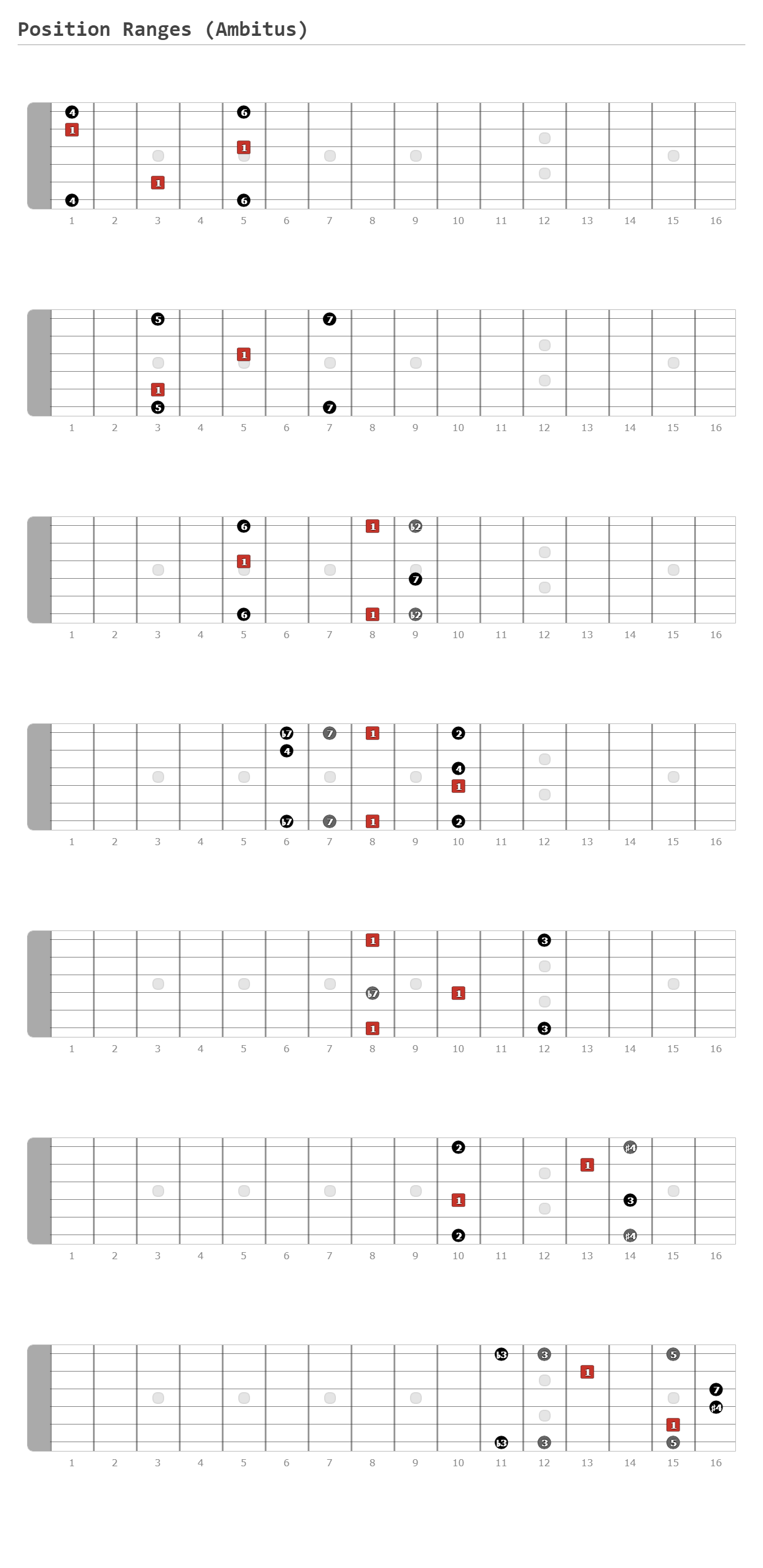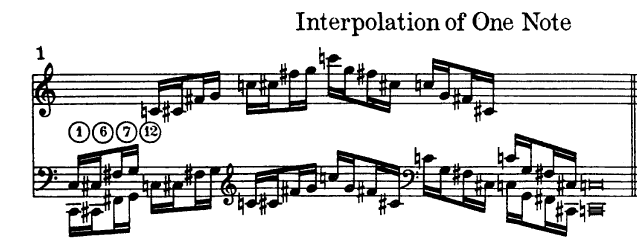Small recap of what we’ve covered so far:
We started with finding octave patterns across the fretboard;
When forming a major scale from these octaves, we found that there are 3 directions we can move in after our root note;
From this came the formation of 7 positions;
We used the major scale to establish the melodic minor scale & melodic minor to establish the diminished scales and Messiaen Mode 3
If we zoom out a bit and take a closer look at the “edges” of each position we come to this:
I associate this with a term called “ambitus” which is basically the range of a given instrument or voice (or the modes in Renaissance).
In other words, they’re the outer limits. In this case, more specifically, the outer limites of each position that’s centered around “C”.
If we fill all the notes within this range, we get this:
I called this Schrödingers fretboard, because every note is a possibility until chosen or “observed” (I know it’s a stretch, but that’s just the association that came to mind).
What we can observe immediately is that every position has a range of 5 frets, except for “fret region 11 - 16” (the last one).
We can see how get to this if we cycle through the major scale, melodic minor and lydian dominant:
This is how we can “define” our boundaries (or playground as I also like to think of it).
That’s actually the whole reason we’re going through this ordeal.
The fretboard is a sea of possibilities in terms of fingerings, so we need to establish boundaries if we want to have a structured approach to study it.
If you’re not into that, then these posts will probably be one big over-thinking effort for you (and maybe it is).
Slonimsky
I chose to dive into Slonismky’s “Thesaurus of melodic scales and patterns”, because it’s something musicians occasionally like to obsess over (same as Messiaen Mode 3).
Using our established boundaries, we can even go for the more “abstract” constructions and still keep an overview of the fretboard.
Here are the other three interpolations:
The fretboard charts of these are in the attachment.
Intervals
There are two important aspects to all this:
One we already established, which is the setting of boundaries;
The other, is thinking in intervals and the relation to the “root”.
The combination of these two will give you a complete overview of the notes.
As I mentioned in a previous post, do not try to memorize the patterns.
I can’t stress that enough: it’s not about the patterns and trying to memorize them.
It’s about knowing what the “root” is and knowing where the relative intervals are (b2, 2, b3, 3, etc.).
Generate, don’t memorize.
Happy practicing.












